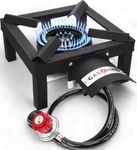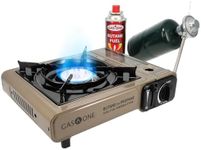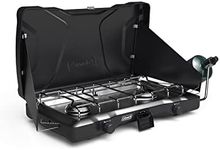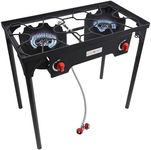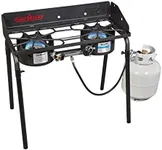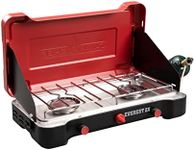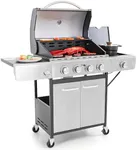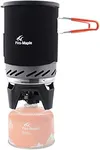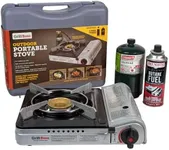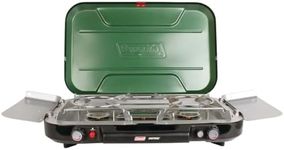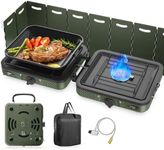Buying Guide for the Best Propane Camping Stoves
Choosing the right propane camping stove can significantly enhance your outdoor cooking experience. Whether you're a solo adventurer or camping with a group, the right stove can make meal preparation easy and enjoyable. When selecting a propane camping stove, consider factors such as size, weight, fuel efficiency, and cooking power. Understanding these key specifications will help you make an informed decision that best suits your camping needs.Size and PortabilitySize and portability are crucial when selecting a propane camping stove, especially if you need to carry it over long distances. Smaller, compact stoves are ideal for solo campers or those with limited space, while larger stoves with multiple burners are better suited for group camping and more elaborate cooking. Consider how much space you have in your backpack or vehicle and how far you need to carry the stove.
Number of BurnersThe number of burners on a camping stove determines how many dishes you can cook simultaneously. Single-burner stoves are lightweight and easy to transport, making them perfect for simple meals. Two-burner stoves offer more versatility, allowing you to cook multiple items at once, which is great for family or group camping. Choose based on your cooking needs and the number of people you’ll be cooking for.
BTU OutputBTU (British Thermal Unit) output measures the stove's cooking power. Higher BTU ratings mean faster cooking times and the ability to handle more demanding cooking tasks. For basic heating and cooking, a stove with lower BTU output (around 5,000-10,000 BTUs) is sufficient. For more intensive cooking, such as boiling water quickly or cooking multiple dishes, look for stoves with higher BTU output (15,000 BTUs or more). Consider what types of meals you plan to prepare and choose accordingly.
Fuel EfficiencyFuel efficiency indicates how long a stove can run on a given amount of propane. Efficient stoves will use less fuel, which is important for longer trips where carrying extra fuel might be cumbersome. Look for stoves with features like adjustable flame control, which can help conserve fuel. If you plan on extended camping trips, prioritize fuel efficiency to ensure you have enough propane for your entire journey.
Ignition TypeIgnition type refers to how the stove is lit. Manual ignition requires a match or lighter, while piezo ignition systems allow you to start the stove with the push of a button. Piezo ignition is more convenient and safer, especially in windy conditions. If ease of use and safety are important to you, opt for a stove with piezo ignition. Manual ignition stoves are typically more affordable and can be a good choice for those who don’t mind the extra step.
Wind ResistanceWind resistance is important for maintaining consistent cooking performance in outdoor environments. Stoves with built-in wind guards or shields help protect the flame from being extinguished by the wind, ensuring steady cooking. If you often camp in windy areas, look for stoves with good wind resistance features. This will help you cook more efficiently and avoid frustration from constantly relighting the stove.
Durability and Build QualityDurability and build quality determine how well the stove will hold up over time and under various conditions. Stoves made from high-quality materials like stainless steel or aluminum are more resistant to rust and wear. If you camp frequently or in harsh environments, invest in a stove with robust construction to ensure it lasts through many adventures. Consider how often you’ll use the stove and the types of conditions it will face.
